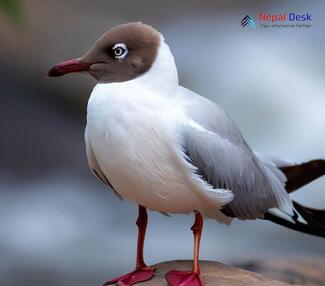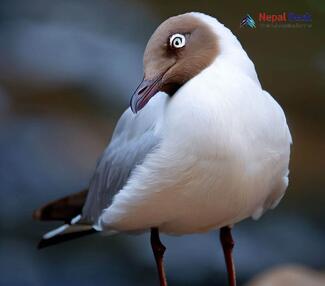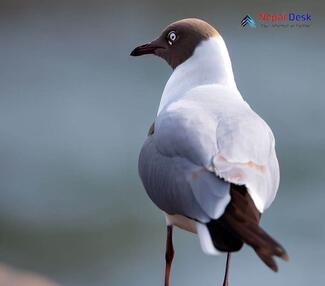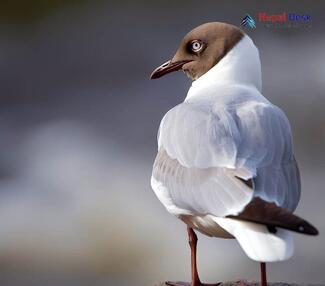Nepal, a country known for its stunning landscapes and rich biodiversity, is home to an incredible array of bird species. Among these diverse avian inhabitants is a lesser-known but truly fascinating species: the Brown-headed Gull (Chroicocephalus brunnicephalus). This migratory bird, native to the Nepal and the Indian subcontinent, and Southeast Asia, has been reported in Nepal during the winter months, adding to the enchantment of the region's wildlife. In this article, we will explore the unique characteristics, habitat, and behavior of the Brown-headed Gull in Nepal.
Characteristics of the Brown-Headed Gull
The Brown-headed Gull is a medium-sized gull characterized by its distinct dark brown head, which gives the species its name. During the non-breeding season, this brown hood fades to reveal a white head with small dark spots. The gull's body is predominantly white with grey wings and black primary feathers displaying white tips. With a wingspan of around 110-125 cm, this species is easily distinguishable from other gulls found in the region.
Habitat and Distribution
Brown-headed Gulls are primarily found near coastal areas but have been known to venture inland during migration. In Nepal, they can be spotted around wetlands, lakes, and rivers – typically at lower elevations of up to 300 meters above sea level. Notable locations for observing these gulls include Kisanghat Island, Lake Rara in Mugu District, Taudaha Lake near Kathmandu, and the Koshi Tappu Wildlife Reserve.
Behavior and Diet
As social creatures, Brown-headed Gulls generally form large colonies during their breeding season. They build nests on islands or other undisturbed locations near water bodies. Feeding on both aquatic and terrestrial prey items, their diet comprises fish, insects, crustaceans, and sometimes even small rodents. They are known for their opportunistic foraging behavior, diving to catch fish or swooping down to seize insects.
Conservation and Significance
The Brown-headed Gull is classified as a species of "Least Concern" on the IUCN Red List, suggesting that their populations are generally stable. However, like all wildlife, they can be impacted by habitat loss, pollution, and human disturbance. The presence of these gulls in Nepal provides bird enthusiasts with a unique opportunity to observe them during their winter migration and offers insights into the intricate ecosystem dynamics within the region.
In conclusion, Nepal's diverse avian fauna is further enriched by the arrival of the captivating Brown-headed Gull during its winter migration. Their distinct appearance, behavior, and habitat preferences provide both locals and tourists alike with an enchanting sight to behold. By raising awareness and promoting conservation efforts for these remarkable birds and their natural environments, we can ensure that future generations continue to enjoy the wonder of Nepal's thriving biodiversity.




